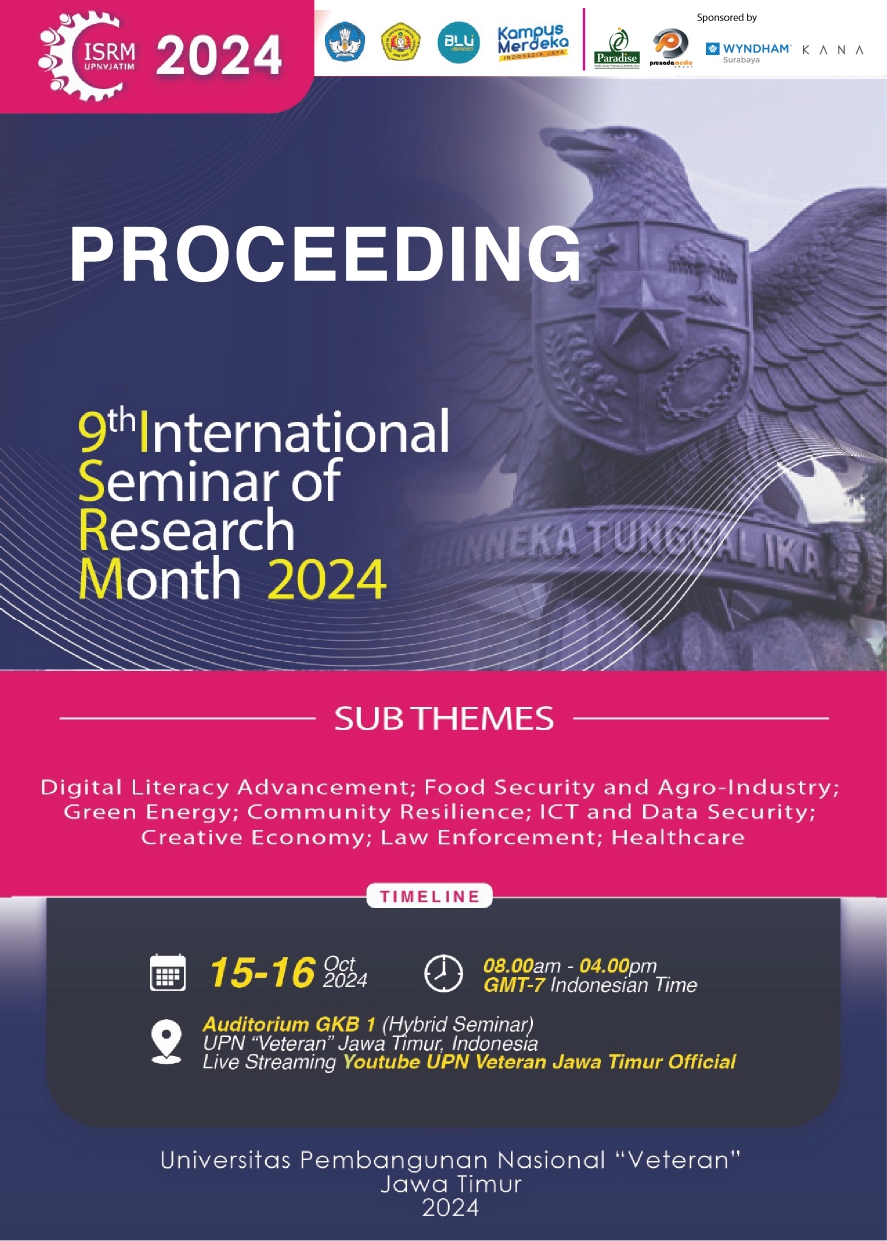Optimization Production Magnesium Phosphate Formation with the Addition of Sodium Phosphate
DOI:
https://doi.org/10.11594/nstp.2025.4760Keywords:
Magnesium phosphate, Sodium phosphate, optimizationAbstract
This study was conducted to optimize the effect of sodium phosphate (Na?PO?) concentration and solution pH on the formation of magnesium phosphate (Mg?(PO?)?) precipitates using the Response Surface Methodology (RSM) approach. This method is used to analyze the relationship between the two variables and determine the optimal conditions that produce maximum precipitation. In this precipitation process, magnesium ions (Mg²?) and phosphate ions (PO?³-) react in solution to form insoluble magnesium phosphate compounds. The analysis results show that the pH of the solution and the concentration of Na?PO? have a significant influence on the efficiency of precipitate formation. Based on the RSM approach, the optimum conditions for magnesium phosphate precipitation were obtained, namely at a Na?PO? concentration of 15% and a solution pH of 9. Under these conditions, the maximum amount of precipitate formation occurred, indicating that this combination of parameters plays an important role in the stability of the precipitation process. This finding has significant implications in the field of environmental engineering, particularly in wastewater treatment systems containing magnesium and phosphate ions. By understanding the optimum parameters in the precipitation process, the design of wastewater treatment systems can be improved to increase their efficiency and effectiveness in reducing contaminants. In addition, this data can be used as a reference in the development of simulation software that supports design optimization of sewage treatment equipment. This study also provides.
Downloads
References
Anami, W. R., Maslahat, M., & Arrisujaya, D. (2020). Presipitasi logam berat limbah cair laboratorium menggunakan natrium sulfida dari belerang alam. Jurnal Sains Natural, 10(2), 61. https://doi.org/10.31938/jsn.v10i2.283
Dewangga, B. S., Setyanugraha, M. A., & Edahwati, L. (2022). Uji karakteristik magnesium fosfat dari pelarutan mineral dolomit dengan asam fosfat. Journal of Chemical Process Engineering, 7(1), 2655–2967.
Su, C-C., Dulfo, L. D., Dalida, M. L. P., & Lu, M-C. (2014). Magnesium phosphate crystallization in a fluidized-bed reactor: Effects of pH, Mg:P molar ratio and seed. Separation and Purification Technology, 125(7), 90–96. https://doi.org/10.1016/j.seppur.2014.01.019
Fahim, I., Kheireddine, A., & Belaaouad, S. (2013). Sodium tripolyphosphate (STPP) as a novel corrosion inhibitor for mild steel in 1 M HCl. Journal of Optoelectronics and Advanced Materials, 15(5–6), 451–456.
Fariadi, A. F. D., Pinakesti, A., & Utami, I. (2022). Pengendalian laju korosi logam paduan menggunakan inhibitor phosphate dalam medium korosif. ChemPro, 3(1), 65–68. https://doi.org/10.33005/chempro.v3i1.163
Fatoni, R., & Fatimah, S. (2017). Pengembangan ekonomi kreatif melalui pembuatan sabun cair ; sebuah upaya pemberdayaan anggota aisyiah di wilayah Solo Raya. The 6th University Research Colloquuium 2017, 149–152. http://journal.ummgl.ac.id/index.php/urecol/article/download/1327/695/
Prassanti, R., & Alwi, G. (2018). Recovery natrium fosfat dari hasil samping pengolahan monasit secara basa dengan metode kristalisasi. Jurnal Teknik Kimia, 61–65.
Radja, B. H., Firdani, A., & Billah, M. (2021). Kinetika reaksi pembuatan magnesium hidroksid dari bittern. ChemPro, 2(01), 23–28. https://doi.org/10.33005/chempro.v2i01.73
Royani, A., Sulistiyono, E., Prasetiyo, A. B., & Subagja, R. (2018). Extraction of magnesium from calcined dolomite ore using hydrochloric acid leaching. AIP Conference Proceedings, 1964. https://doi.org/10.1063/1.5038299
Downloads
Published
Conference Proceedings Volume
Section
License
Copyright (c) 2025 Dodik Hendra Saputra, Evlyansa Bunga Rizka Ananda, Reva Edra Nugraha, Dyah Suci Perwitasari

This work is licensed under a Creative Commons Attribution 4.0 International License.
Authors who publish with this proceedings agree to the following terms:
Authors retain copyright and grant the Nusantara Science and Technology Proceedings right of first publication with the work simultaneously licensed under a Creative Commons Attribution License that allows others to share the work with an acknowledgement of the work's authorship and initial publication in this proceeding.
Authors are able to enter into separate, additional contractual arrangements for the non-exclusive distribution of the proceedings published version of the work (e.g., post it to an institutional repository or publish it in a book), with an acknowledgement of its initial publication in this proceeding.
Authors are permitted and encouraged to post their work online (e.g., in institutional repositories or on their website) prior to and during the submission process, as it can lead to productive exchanges, as well as earlier and greater citation of published work (See the Effect of Open Access).














